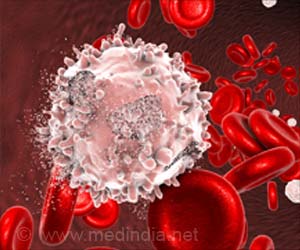Newly identified protein RGSz1 (Regulator of G protein signaling z1) found in brain regions can mediate analgesic responses thus preventing opioid addiction.

‘RGSz1 protein can optimize the therapeutic actions of opioids, leading to safer and less addictive treatments.’





Opioids are powerful analgesics, but when they are used long-term, they promote dependence and can easily transition to addiction. Patients who receive opioids for chronic pain require higher amounts of the drug over time as they develop analgesic tolerance. The need for higher amounts not only results in severe and often life-threatening adverse effects, but it also increases the risk for dependence and addiction. Amidst the current opioid crisis in the United States, there is an immediate need to develop novel therapeutic interventions for safer and more efficient analgesics. The development of safer opioids is challenging because opioid receptors are expressed throughout the brain and not just in the cells mediating pain relief. The Mount Sinai research team targeted an intracellular network that controls the actions of opioids primarily in the periaqueductal gray, a brain region that plays a critical role in analgesic responses. Using genetic mouse models for global or brain region-targeted manipulation of RGSz1 expression, Mount Sinai scientists identified RGSz1 as a negative modulator of opioid analgesia, and a tolerance-promoting factor. Mice that lacked the gene responsible for encoding RGSz1 (RGSz1 knockout mice) responded to significantly lower doses of opioids to achieve pain relief. Furthermore, when RGSz1 activity was blocked, opioids were less rewarding, providing further evidence that RGSz1-controlled pathways may be targeted to optimize the therapeutic actions of opioids.
"Our discovery that RGSz1 and RGSz1 regulated pathways can be targeted to promote analgesia is very exciting because it enables us to develop strategies for the use of low opioid doses for pain relief," says Venetia Zachariou, PhD, Associate Professor in the Fishberg Department of Neuroscience, the Department of Pharmacological Sciences, The Friedman Brain Institute, and The Addiction Institute, Icahn School of Medicine at Mount Sinai.
Additionally, the research team discovered that RGSz1 competes with another RGS protein, Axin 2, and this competition controls the function of the protein β-catenin. β-catenin plays an important role in opioid actions by promoting the expression of genes that counteract the maladaptive changes associated with analgesic tolerance. This is another factor uncovered in this study that provides insight about the cellular and molecular pathways that mediate the actions of opioids in specific brain regions or cell types, which is essential for the development of safer therapeutics for analgesia or addiction.
"RGSz1 is expressed only in subsets of neurons that mediate opioid actions. The actions of opioids in addiction-related networks are mediated by distinct RGS proteins. We are now screening currently prescribed opioids as well as new compounds to determine their abuse potential and analgesic efficacy based on the RGS protein they activate. That knowledge will be power in the fight against this deadly opioid epidemic," says Dr. Zachariou.
Advertisement
Source-Eurekalert















